Table of Contents
Digital technology has generated opportunities for word-of-mouth marketing and interaction on social media. Alberto Maestri shares his tips for making the most of them.
Life’s for sharing: how many times have you heard this mantra? From adverts (remember that one for T Mobile back in 2009?)…
… to everyday life.
The ubiquity of social media and digital platforms has had a profound impact on our daily lives, with major repercussions for the way in which all businesses are promoted and run.
From multinationals to SMEs, digital technology has generated myriad opportunities for word-of-mouth promotion, communication and interaction with viral content. Not making the most of them would be criminal!
If you want to understand how to use social networks and the content constantly generated on them for your (small, medium or large) business or for the brand you work for, follow the five golden rules that are set out below.
What is content? And why is it important for your marketing activity?
The term content means any piece of information that is produced and shared by users or firms, online or offline. The most immediate examples are tweets and Facebook posts, videos and infographics; but content includes flyers and magazines too. Businesses of all sizes have always used content for their communications and product storytelling. Two of the most famous examples are the Pirelli Calendar and the Michelin Guide.
What happens if there is too much content?
You end up with content shock. . Here’s a chart taken from the article “Content Shock: Why content marketing is not a sustainable strategy” which explains the problem.
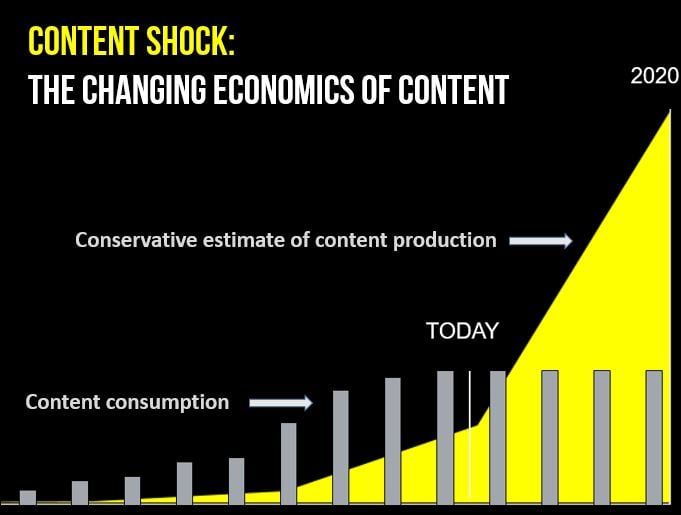
As soon as you or I act as representatives or owners of a brand or business, we have to remember that there’s a limit to how much content people can consume. By “consume” I mean the viewing or reading of content, depending on its format (text, video, etc.). What’s more, brands and businesses are not only competing on the market for products but on the market for information too. In other words, the market for content.
More and more content is being produced, and forecasts expect this growth to continue exponentially in the near future. But people’s ability to consume it can’t keep up…
The problem is nicely illustrated by this diagram.
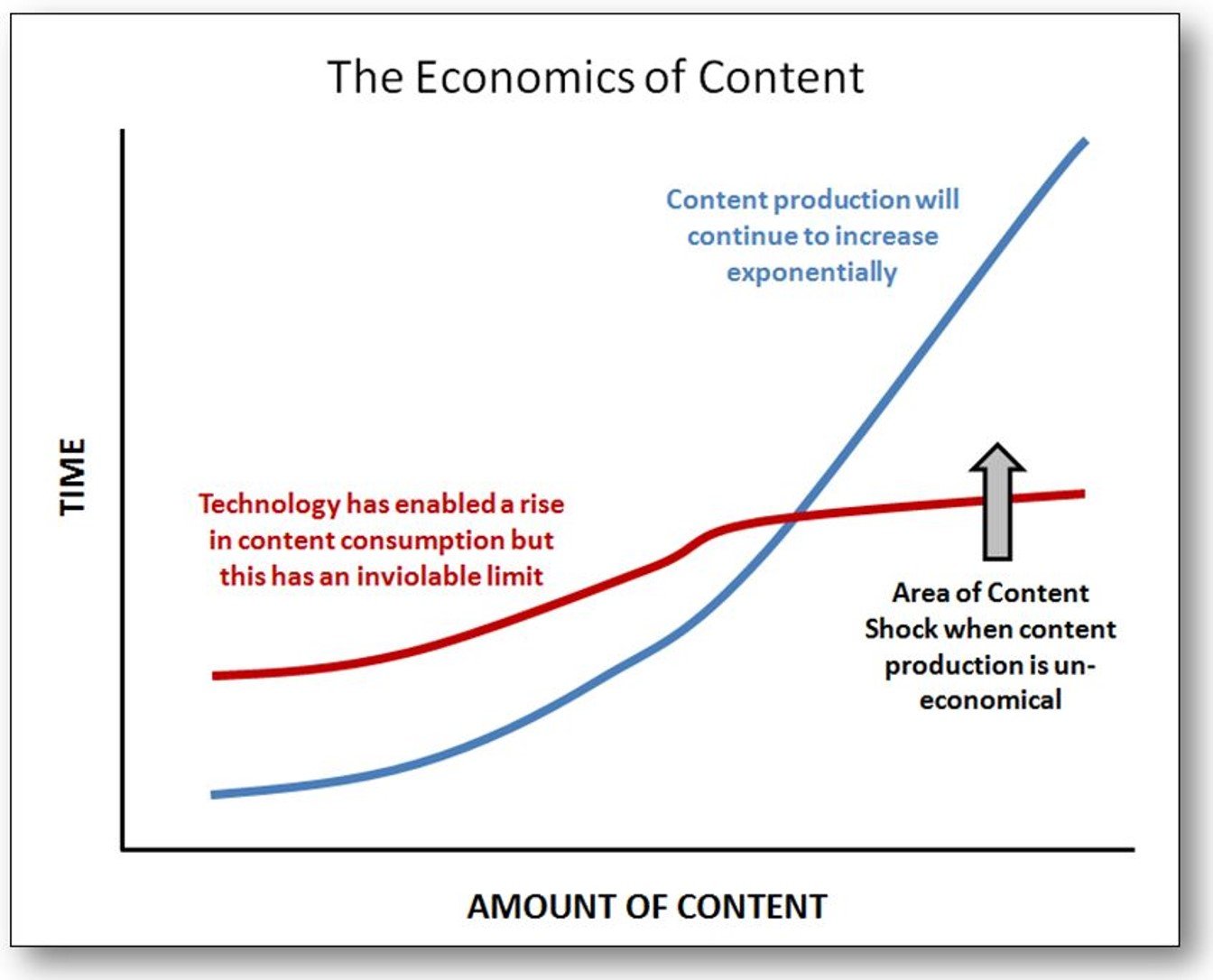
It looks at things from a company’s perspective in terms of economies of scale and the profitability curve for content production. Producing a social media plan, making a video, designing an infographic: these are costly activities, both in terms of time and of human and financial resources.
Which immediately begs the question:
How sustainable is content production? When does it become inefficient and ineffective, and therefore totally unsustainable?
This point is illustrated by the intersection of the red line in the diagram, which represents content consumption, and the blue line, which represents content creation. Beyond this point, content becomes an ineffective and inefficient endeavour for your marketing strategy, one with little incremental / added value: the cost of producing it can no longer be justified by the (modest) results obtained with the target audience.
4 (immediate) cures for content shock (spoiler: they involve offline marketing to broadcast content and stimulate social conversations)
Content marketing, content shock, the economics of content… I hope I haven’t frightened you! In fact, I’ve tried to use entrepreneurial/business language to help you grasp a few fundamental concepts that are required for successful marketing and digital communication.
And now, like any self-respecting consultant, after outlining the problem, I will show you the solution! 🙂
Actually, there are four solutions, all stemming from a single guideline that you should always bear in mind to get the most out of digital tools:
What matters is the quality of content, not the quantity.
I’m now going to introduce four easy – i.e. low cost and immediately implementable – ways to ensure that people online start talking about you, engage with your company and/or brand, and share content, thereby doing your marketing for you. These solutions use materials and content that you already produce to encourage word-of-mouth marketing online, so that yours becomes a brand that’s talked about not just in shops or in retail aisles, but on social media too.
Curious, right? Of course you are. Who doesn’t want to save time and money?
So I’ll get straight to the point with this list.
1.Social packaging: this is something I talked about in the article “Three trends (and technologies) that will stimulate digital creativity in 2018”. Instead of the usual packaging for your product, why not think about something “social”, specifically designed to encourage clicks, photos and sharing by the people that see it? Excellent examples are those of Nutella and Coca Cola, but as you’ll see below, it’s not a question of money, but rather of coming up with a great idea.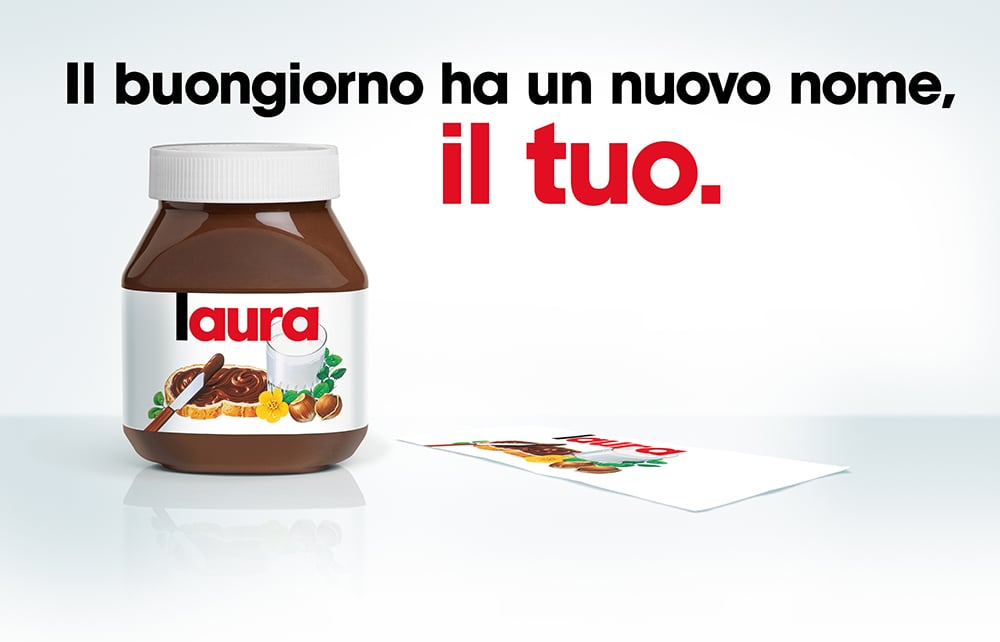
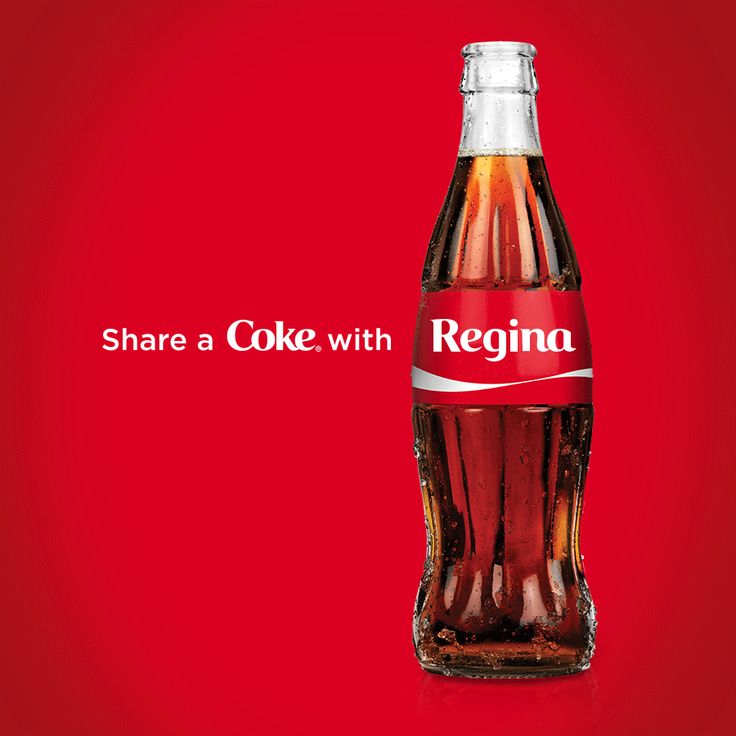
I hope I’ve got your creative juices flowing. Put yourself in your customer’s shoes: what would make you share the packaging of a product that you’ve bought?
2.Social business cards: again, it’s a case of “simply” looking at an everyday work tool, like the business card, in a new way. Look at how Thomas Smith has re-imagined his business card as if it were his Facebook profile.

If the idea grabs you, look at how many others you can find on Pinterest alone.
3.Social flyers: flyers and leaflets too can be approached from a completely different angle. The world of social media in particular and the Internet in general has brought to light some well-defined creative processes for laying out text and other elements (which have been heavily influenced by infographics). Here are two great examples.
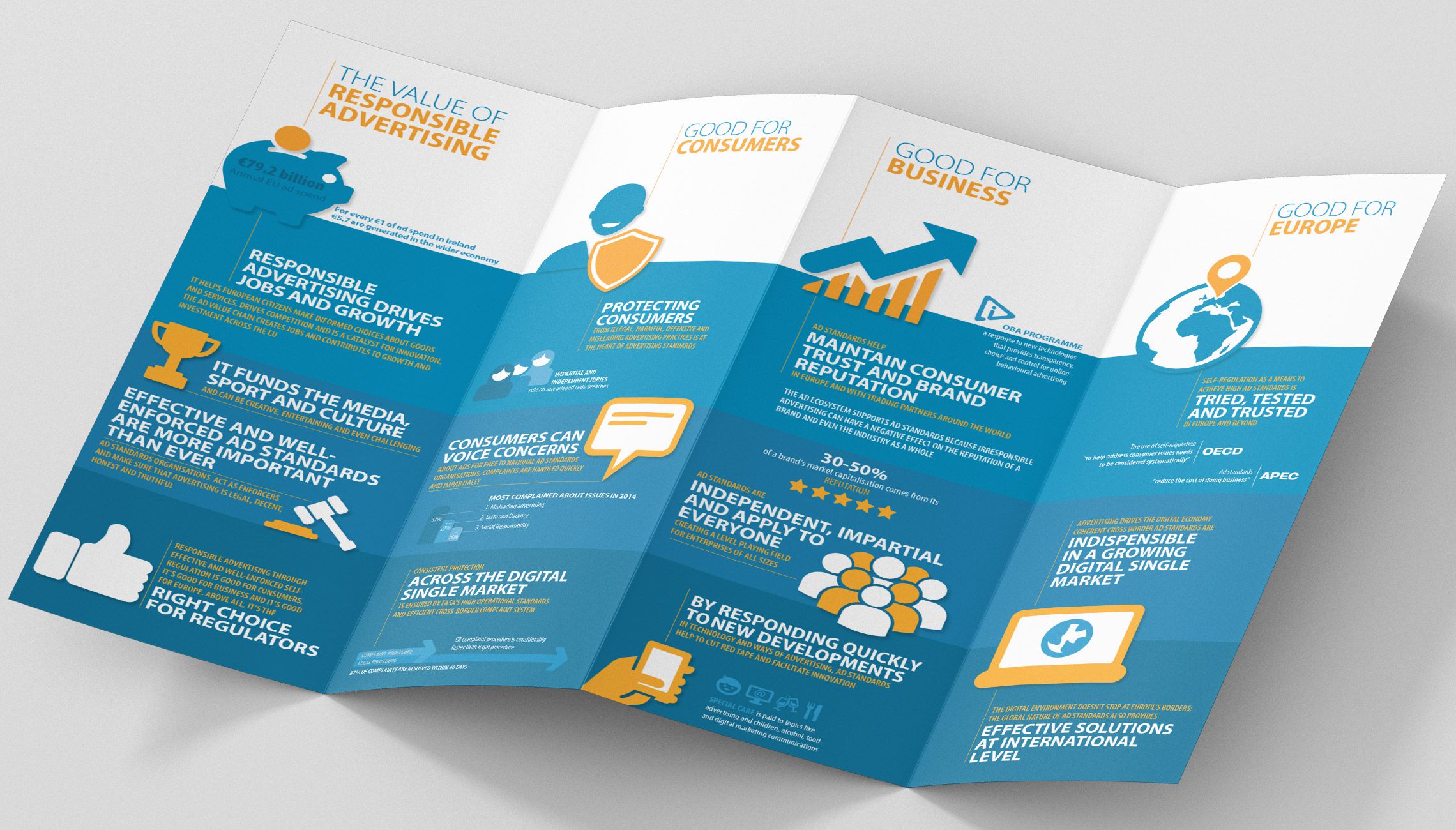
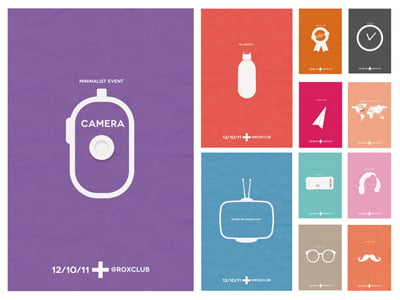
Do you like them? Here are another 48 examples… with designs like these, the web will be bursting with images posted by people who’ve picked up one of your flyers 🙂
4.Stickers: do you use TripAdvisor on your travels, like me? Of course, TripAdvisor is just one example: there are hundreds, thousands of platforms acting as virtual travel agents, estate agents and so on. But did you notice one thing? For some time now, TripAdvisor has been sending stickers to its top-rated establishments, to be displayed on their reception counters or windows. These stickers are often one of most photographed and shared images by customers! Because it’s a quality certificate that features, on a space of a few square inches, the name of the establishment and the stars it has been awarded, the sticker is essential content for sharing with friends and relatives on WhatsApp, Facebook or other social media platforms when recommending a destination. Of course, I’m not suggesting you should start printing stickers similar to those provided by TripAdvisor. But think about it: they’re enjoying a new lease of life, right?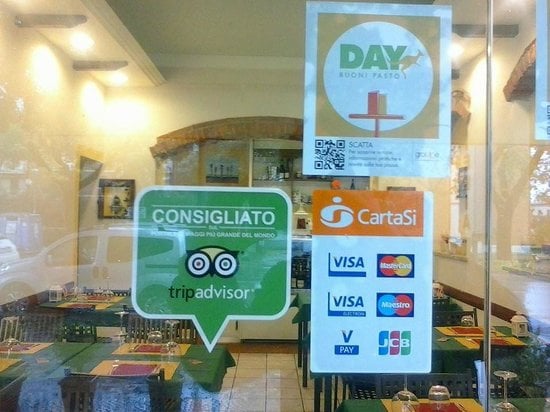
… and 1 final tip (but watch your step)
I hope I’ve given you 4 good reasons, from a social media perspective, to re-think the marketing tools you regularly use. Online, people don’t just share pictures of kittens 😉 so whether or not you believe your company should have an online presence, I strongly advise you to take a fresh look at what you already have at your disposal.
I’ll wrap things up with one last tip, which is a sure-fire way to get people talking about you online: competitions. Lots of businesses run them, although not always very effectively.
Competitions are definitely useful and help to spread new brand content and to encourage content creation by consumers and participants. But you need to know how to organise and run them. https://www.spreaker.com/user/gminguzzi/165mbp-contest-online-vercellotti-mixdow?utm_medium=widget&utm_source=user%3A8469255&utm_term=episode_title
Onwards and upwards!

